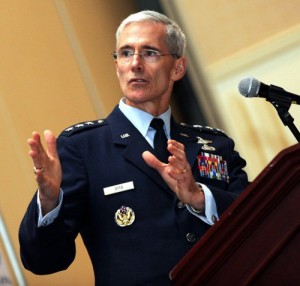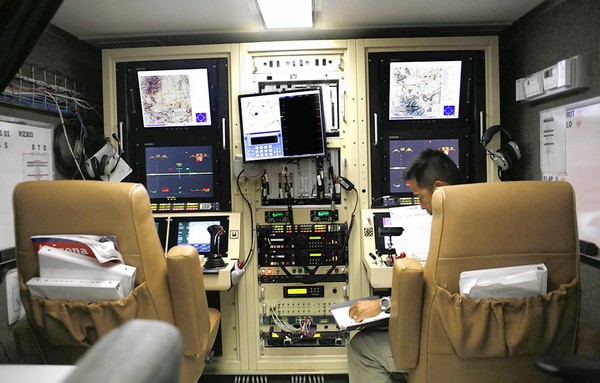Single-operator ground stations is one of the future capabilities desired by the US Air Force’s fleet of unmanned air systems (UAS), the service’s intelligence chief says.
For the past 15 years, the USAF has built a fleet of armed reconnaissance UAS with the General Atomics Aeronautical Systems (GA-ASI) MQ-9 Reaper and high-altitude surveillance platforms, such as the Northrop Grumman RQ-4A Global Hawk.
But budget constraints have forced the air force to prioritise modernisation programmes that make existing fleets more efficient.
 One major improvement could reduce a currently two-person Reaper flight crew by half on most missions, says Lt Gen Robert Otto, the air force’s deputy chief of staff for intelligence, surveillance and reconnaissance (ISR).
One major improvement could reduce a currently two-person Reaper flight crew by half on most missions, says Lt Gen Robert Otto, the air force’s deputy chief of staff for intelligence, surveillance and reconnaissance (ISR).
“There are certainly missions today that could be done by one woman or one man managing both the aircraft and the sensors if we architected the ground station to support it,” Otto says.
“We’ve got pilots flying in Afghanistan in F-16s at night under night vision goggles, and they’re operating a LANTIRN pod, and they’re picking up ops recce [operations reconnaissance] – one person,” said Lt. Gen. Robert Otto, Air Force deputy chief of staff for intelligence, surveillance and reconnaissance (ISR), at an AUVSI conference. “At ground speed of zero at Creech Air Force Base, we have two people [whose aircraft is] flying 75 or 150 knots. Why haven’t we thought about architecting that into a one-person job?”
“There are certainly missions today that could be done by one woman or one man [who’s] both flying the aircraft and managing the sensors, if we architected the ground stations to enable it,” Otto said. “We could certainly design a cockpit that could be done by one for many missions with the option of being done by two for some missions.”
Such a redesign, Otto said, could have a “significant” impact on the Air Force’s current shortage of Remotely Piloted Aircraft (RPA) pilots. The Air Force has told Congress it could face a shortfall in fiscal 2016 of 400 of the 1,200 MQ-1 and MQ-9 pilots needed.
The USAF now operates 60 continuous surveillance orbits with the MQ-9 and MQ-1 Predator, which requires a cadre of about 1,000 pilots and 1,000 sensor operators.
By redesigning the ground station for single-pilot operations, like the Lockheed Martin F-16, the air force could potentially reduce the manpower requirement by hundreds of sensor operators, Otto says.
Another upgrade could introduce an auto-land capability on the MQ-9, a capability that exists already on the RQ-4, Otto says. That could reduce the manpower requirement to staff launch and recovery element teams for each of the 60 surveillance orbits.
Source: Flightglobal

